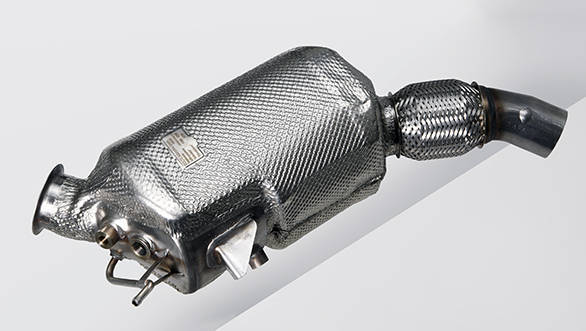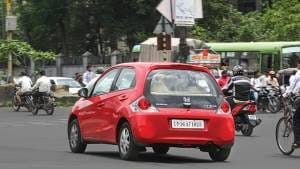Simple Tech: Why diesel vehicles are being singled out in Delhi
This winter, Delhi has been rocked by a jump in pollution levels that led the Supreme Court and the Delhi Government to take some pretty drastic steps. Measures that aim to control the pollution levels, ostenstibly by putting severe curbs on vehicle use in general, and 2000cc and bigger diesels in particular. Since Simple Tech doesn't cover bureaucracy, let's focus on why diesels are being singled out.
Let's start with the basics. Humanity today uses two kinds of internal combustion engines. Petrol engines use a light, pure fuel that is ignited by a spark. Which is why they're called spark ignition engines. Diesel engines use a heavier, less pure fuel that is ignited by pressure. Naturally, it's called the compression ignition engine.
In both kinds of engines, the mechanisms are designed to convert chemical energy from the fuel. Ignition causes a chemical reaction - burning - which releases the chemical energy into heat and pressure. The engine's mechanical parts are used to convert this pressure into rotational motion, first at the crank and then via a gearbox, at the driven wheel.
Where petrol and diesel engines vary is in the properties of the fuel itself. Petrol is light, pure and highly volatile. In theory, we could ignite it by compression just like diesel. But the combustion wouldn't be controllable and it's more likely to break the engine into smithereens than produce controlled, useful motion. So petrol engines use the fuel at a low pressure and ignite using an external agent (the spark from the spark plug). What is a design element in this is the compression ratio - how much the cylinder compresses in the incoming charge - a mix of fuel and air - before ignition. We know that higher compression produces better power as well as efficiency. The downside of higher compression is that the purity of the fuel must be excellent for results - otherwise the engine could be damaged.
Diesel is also derived from crude oil like petrol but it's a heavier, more viscous fluid and is considerably less refined compared to petrol. In that sense, diesel is a far more patient fuel and that allows us to use compression to produce controllable ignition. How much compression? While petrols usually range from 8:1 (mildly stressed petrol) to 13:1 (high performance petrol engines), diesel routinely start at 14:1 and head all the way up to 25:1! The higher pressure's side effect is the extraction of more energy from the fluid. That's why you read that all things being equal, diesels are naturally more fuel efficient than petrols. In India, that property takes a back seat to the price of the fuel - diesel is significantly cheaper than petrol. Even in daily use, diesels produce more torque which makes them easier to drive.
The downsides of diesel are well-understood as well. Diesels used to be difficult to start on cold mornings - something current day fuel delivery systems and attendant electronic systems have fixed. Diesels are also more expensive to maintain in the long run, which is why, OVERDRIVE still recommends petrols over diesels to readers who don't drive around all that much.
Now, why are diesel engines being singled out in the Delhi crisis? This is again down to the properties of the fuel itself. Both petrol and diesel engines produce hydrocarbons and carbon dioxide emissions during the combustion process. The former are considered toxic and the latter are considered harmful to the environment. But remember that diesel as a fuel carries more impurities with it. So what happens is that as diesel burns in the combustion chamber, among the outputs of the chemical reaction (burning) are particulates - a group of substances clubbed together and called diesel particulate matter or DPM. These are solid particles which include soot (elemental carbon and some aromatic hydrocarbons), ash, metallic abrasion particles and sulphates or silicates.
These particles are very tiny is size, microns, really. So they stay suspended in air once released from the tail pipe. Most of the time, these particulates are classified by size. The smallest are called PM0.1 or Ultrafine Particular Matter with sizes of 0.1 micron or smaller. The one you've heard most about in the context of Delhi is PM2.5 or 2.5 microns or smaller in size.
PM10 or particulates under 10 microns are considered a health risk because they can be inhaled and can accumulate in the human respiratory system. PM2.5 are considered even worse because at 1/30th the width of a human hair, their reach is even more. Carbon dioxide and the toxic hydrocarbons are harmful too. But since they're gases, our lungs can deal with them fairly well. DPM is far worse because it accumulates. The particles cling to our air passages and lungs. They cause an array of side-effects like headaches, dizziness, coughing, nausea, laboured breathing and irritation in eyes etc. Prolonged exposure can lead to altogether more serious problems including lung cancer and cardiovascular and cardiopulmonary problems.
A nuance here is to note that PM2.5 isn't just a diesel thing. Power plants, especially coal-fired ones, wood burning and certain industrial processes also generate particulate emissions.
Are these issues unknown? Not really. DPF exposure has been seen in truck drivers, railroad workers, and miners, all of whom are exposed to diesel fumes and emissions more than other people. In fact, if you search for DPF exposure online, you'll see mining-related results a lot more than anything else.
Now that we know the problem, let's look at solutions.
 This is a diesel particulate filter. DPFs do reduce particulate emissions from diesels significantly but they're expensive and crucially, require clean diesel to do their job
This is a diesel particulate filter. DPFs do reduce particulate emissions from diesels significantly but they're expensive and crucially, require clean diesel to do their job
Diesels have already come a long way. Various injection methods already aim to cut the unburnt carbon residue in the exhaust. One way to cut particulate matter emissions is to mandate the use of diesel particulate filters. Indeed, many of the cars above 2000cc that're not on sale till March 2015 pursuant to the Supreme Court order have them installed. But they need a higher quality of diesel to operate effectively. This demand for higher quality fuel is not new and there is still not clarity when it might come to market. Another way to resolve this is to use biodiesel, which has shown to have notably lower particulate emissions.
Ultimately, without heading into the more of politics and law-making, it is clear that cleaner diesel emissions require a long term framework of solutions to fall into place.













